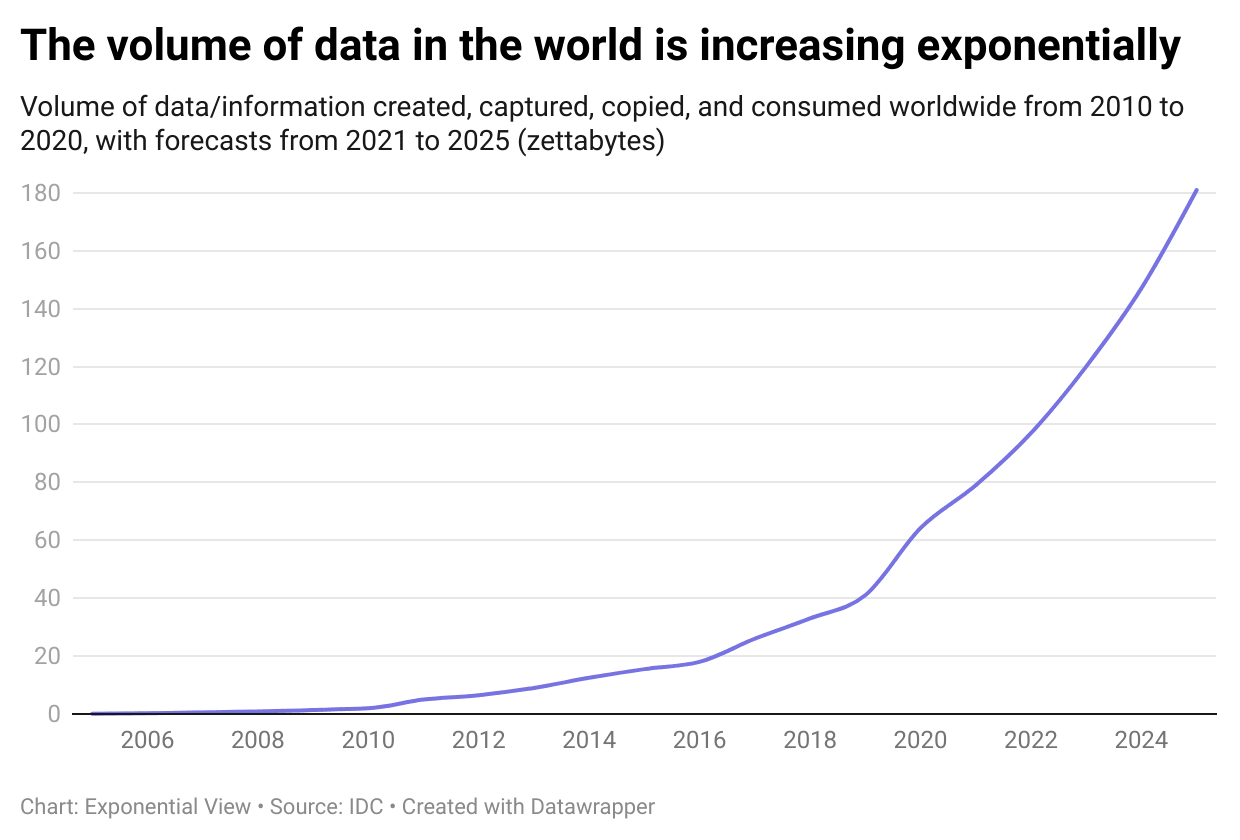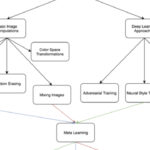The bedrock of a functioning democracy rests heavily on the shoulders of investigative journalism. It is the relentless pursuit of truth, the unearthing of hidden facts, and the holding of power accountable that defines this critical profession. In an era inundated with information and disinformation, the challenges faced by investigative journalists are more complex than ever. Enter Generative Artificial Intelligence (AI) – a technology poised to profoundly transform every facet of this demanding field, from initial data collection to final story presentation.
- Revolutionizing the Newsroom: Generative AI’s Role in Investigative Journalism
- Automating Tedious Tasks and Enhancing Efficiency
- Unearthing Hidden Patterns in Vast Datasets
- Bridging Language Barriers and Global Investigations
- Personalizing and Localizing Investigative Content
- Ethical Imperatives: Safeguarding Integrity in AI-Driven Investigations
Generative AI, with its capacity to create new content, analyze vast datasets, and automate intricate processes, presents both unprecedented opportunities and formidable challenges for investigative journalism. While it promises to enhance efficiency, reveal previously undetectable patterns, and democratize access to powerful analytical tools, it simultaneously introduces a labyrinth of ethical dilemmas, raises critical questions about data accuracy, and necessitates a re-evaluation of journalistic principles. This comprehensive exploration delves into the multifaceted impact of Generative AI on investigative journalism, meticulously examining the ethical considerations that must guide its adoption, the imperative of maintaining data accuracy in an AI-driven environment, and the exciting innovations that lie on the horizon. As newsrooms worldwide grapple with integrating these powerful technologies, understanding their implications is not merely beneficial—it is essential for safeguarding the integrity and future of investigative reporting.

Revolutionizing the Newsroom: Generative AI’s Role in Investigative Journalism
Generative AI is rapidly evolving from a futuristic concept into a practical tool, offering investigative journalists a suite of capabilities that can dramatically alter their workflow and investigative capacity. By automating mundane tasks and augmenting human analytical power, AI stands to free up journalists to focus on what they do best: critical thinking, source building, and compelling storytelling. The integration of Generative AI in newsrooms marks a pivotal shift, promising to transform how investigations are conceived, executed, and disseminated.

Automating Tedious Tasks and Enhancing Efficiency
One of the most immediate and tangible benefits of Generative AI is its ability to streamline labor-intensive processes that traditionally consume a significant portion of an investigative journalist’s time. Imagine sifting through thousands of financial documents, legal filings, or public records—a task that can take months. Generative AI models can ingest, categorize, and summarize these documents at lightning speed, identifying key entities, relationships, and anomalies.
- Data Aggregation and Synthesis: AI can quickly gather information from disparate sources, including public databases, social media, and academic journals, synthesizing it into coherent summaries. This accelerates the initial research phase of any investigation.
- Initial Draft Generation: For routine reports or background briefs, AI can generate preliminary drafts, saving journalists hours of basic writing. This allows them to refine and add depth, rather than starting from scratch.
- Summarization of Lengthy Documents: Generative AI tools can condense lengthy reports, transcripts, or legal documents into digestible summaries, highlighting crucial points and potential leads, thereby accelerating the comprehension phase of complex investigations.
- Fraud Detection: AI algorithms can analyze transaction records, identify unusual spending patterns, and flag potential instances of corruption or embezzlement in government contracts or corporate finances.
- Network Analysis: By mapping relationships between individuals, organizations, and financial flows, AI can uncover hidden networks of influence, illicit activities, or conflicts of interest. This is particularly valuable in investigative journalism AI applications concerning organized crime or political corruption.
- Identifying Anomalies: In large datasets, AI can spot outliers that deviate significantly from the norm, indicating potential irregularities that warrant further human investigation. This might include unusual voting patterns, sudden spikes in certain expenditures, or inexplicable shifts in public sentiment.
- Advanced Translation: AI-powered translation tools can accurately translate vast amounts of text, audio, and even video in real-time, enabling journalists to access and understand foreign language sources without extensive manual translation efforts.
- Cross-Cultural Data Analysis: Beyond simple translation, AI can help analyze cultural nuances in communication, identify regional trends, and understand context-specific jargon, which is vital for effective global investigations.
- Monitoring International Information Flows: AI can monitor foreign media, social media, and dark web forums for relevant information, providing early warnings or leads on international malfeasance.
- Audience-Specific Summaries: AI can generate different versions of a story summary, optimized for various platforms or demographic groups, ensuring the message resonates more effectively.
- Localized Contextualization: For national investigations with local impacts, AI can help weave in local data or examples, making the broader story more relevant to specific communities.
- Interactive Storytelling: While still in nascent stages, AI could contribute to generating interactive elements, data visualizations, or personalized narratives that allow readers to explore aspects of an investigation most relevant to them.
- Training Data Bias: AI models trained on skewed or unrepresentative data can produce biased outputs. For example, if an AI is used to analyze crime patterns and its training data disproportionately represents certain demographics as criminals, it might incorrectly flag individuals from those groups, perpetuating systemic injustices.
- Perpetuating Stereotypes: AI-generated content can inadvertently reinforce harmful stereotypes if the underlying data contains them. This is particularly dangerous in journalism, where accuracy and impartiality are non-negotiable.
- Impact on Fairness and Representation: Biased AI could lead to misdirected investigations, wrongful accusations, or a distorted portrayal of communities, undermining the journalistic commitment to serving the public fairly and equally.
- “Black Box” Problem: When an AI provides an insight or generates a summary, journalists need to know the underlying data and logic that led to that output. Without this, they cannot verify the information independently or explain its provenance to their audience.
- Need to Understand AI Reasoning: For an investigation to be credible, journalists must be able to trace their findings back to verifiable sources. If an AI points to a lead, the journalist must understand the data points and analytical steps that led the AI to that conclusion.
- Accountability for AI-Generated Content: Who is responsible if an AI makes an error or generates false information that is subsequently published? The journalist and the news organization ultimately bear the responsibility, making transparency about AI’s role indispensable.
- Fabricated Evidence: Malicious actors can use deepfakes to create convincing but entirely false evidence, designed to mislead journalists or discredit legitimate investigations.
- Manipulated Audio/Video: A deepfake could show a public figure saying or doing something they never did, creating a scandal that can be difficult to debunk, even with advanced tools.
- Erosion of Trust: The proliferation of deepfakes erodes public trust in all media, making it harder for legitimate investigative reports to be
This automation not only boosts efficiency but also allows journalists to cover more ground, tackle larger datasets, and pursue more ambitious investigations that might otherwise be logistically impossible due to time and resource constraints.

Unearthing Hidden Patterns in Vast Datasets
Investigative journalism often hinges on connecting seemingly unrelated dots across massive datasets. This is where Generative AI truly shines, offering unparalleled capabilities for pattern recognition and anomaly detection. From financial fraud to environmental crimes, AI can identify subtle correlations that human analysts might miss.
By transforming raw data into actionable insights, Generative AI empowers journalists to move beyond surface-level reporting and delve deeper into systemic issues.

Bridging Language Barriers and Global Investigations
In an increasingly interconnected world, investigations often transcend national borders and involve documents or communications in multiple languages. Generative AI offers powerful solutions for overcoming these linguistic hurdles.
This capability significantly expands the scope of investigations, allowing journalists to collaborate internationally and tackle global challenges with greater efficacy.

Personalizing and Localizing Investigative Content
While the primary focus of investigative journalism is uncovering truth, effective communication of these findings is paramount. Generative AI can assist in tailoring investigative reports to specific audiences, making complex issues more accessible and impactful.
This capability enhances engagement and ensures that critical investigative findings reach and impact a broader and more diverse audience.
Ethical Imperatives: Safeguarding Integrity in AI-Driven Investigations
The integration of Generative AI into investigative journalism, while promising, is not without its perils. The very power that makes AI so appealing also necessitates rigorous ethical frameworks to prevent misuse and uphold the core values of journalism. AI ethics in journalism is not an afterthought but a foundational consideration that must guide every step of adoption, ensuring that the pursuit of truth remains paramount.
Bias and Discrimination in AI Models
One of the most significant ethical challenges stems from the inherent biases present in AI models. Generative AI learns from vast datasets, and if these datasets reflect societal biases, the AI will perpetuate and even amplify them. This can have severe implications for fairness and accuracy in investigations.
Mitigation strategies: Journalists must demand transparency about AI training data, advocate for diverse and representative datasets, and implement robust human oversight to review and correct potentially biased outputs. Regular auditing of AI models is crucial to identify and address emerging biases.
Transparency and Explainability (XAI)
The “black box” problem is a critical concern with complex AI models. Often, it’s difficult to understand how a Generative AI arrived at a particular conclusion or generated a specific piece of content. This lack of transparency poses a direct threat to journalistic accountability.
Newsrooms must prioritize AI tools that offer greater explainability (XAI), allowing journalists to peer into the model’s decision-making process. Clear policies on disclosing the use of AI in reporting are also essential for maintaining public trust.
The Challenge of Deepfakes and Synthetic Media
Generative AI’s capacity to create highly realistic synthetic media, including deepfake audio, video, and images, represents an existential threat to truth and trust in journalism. Investigative journalists often rely on visual and auditory evidence, and deepfakes can completely undermine its credibility.






